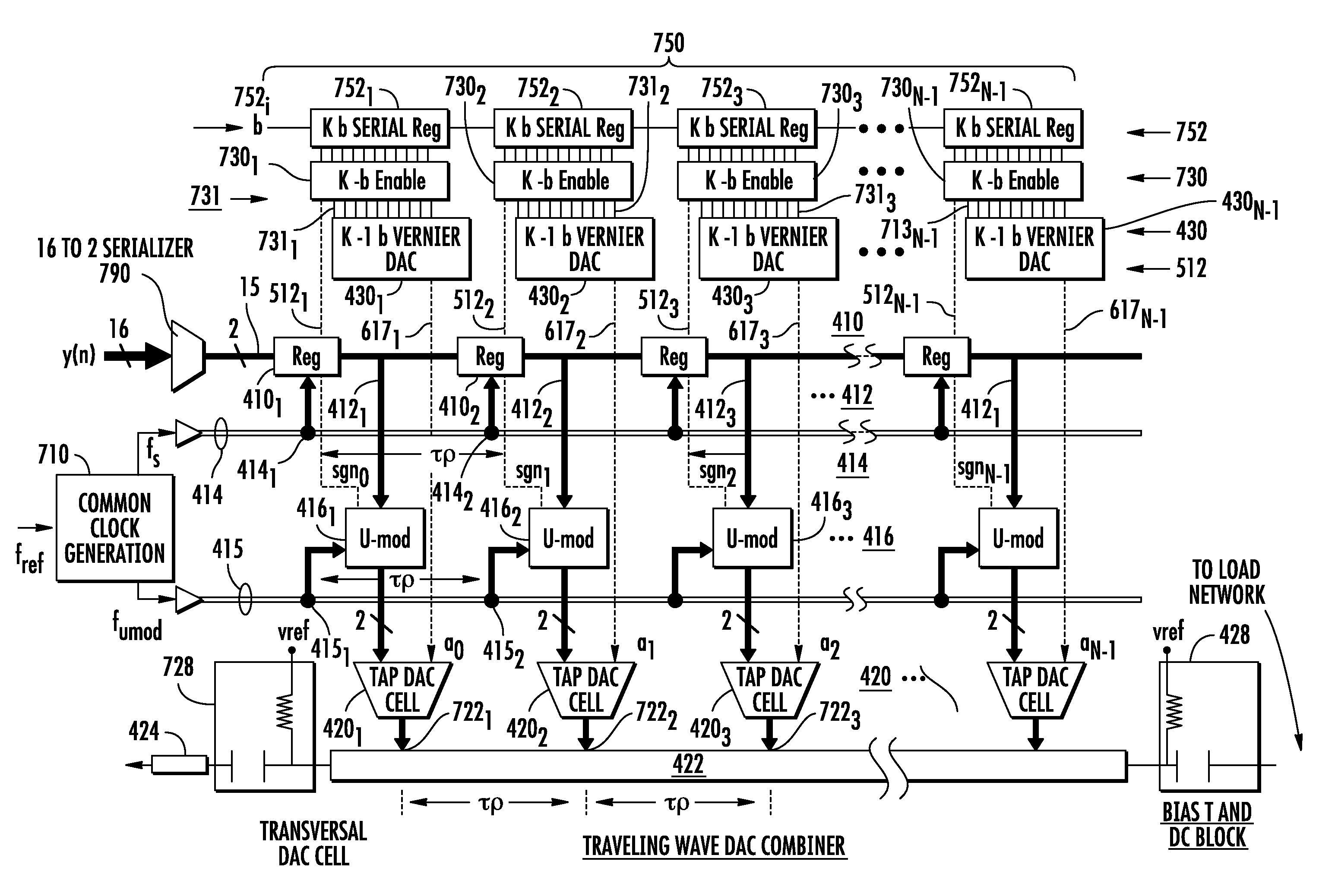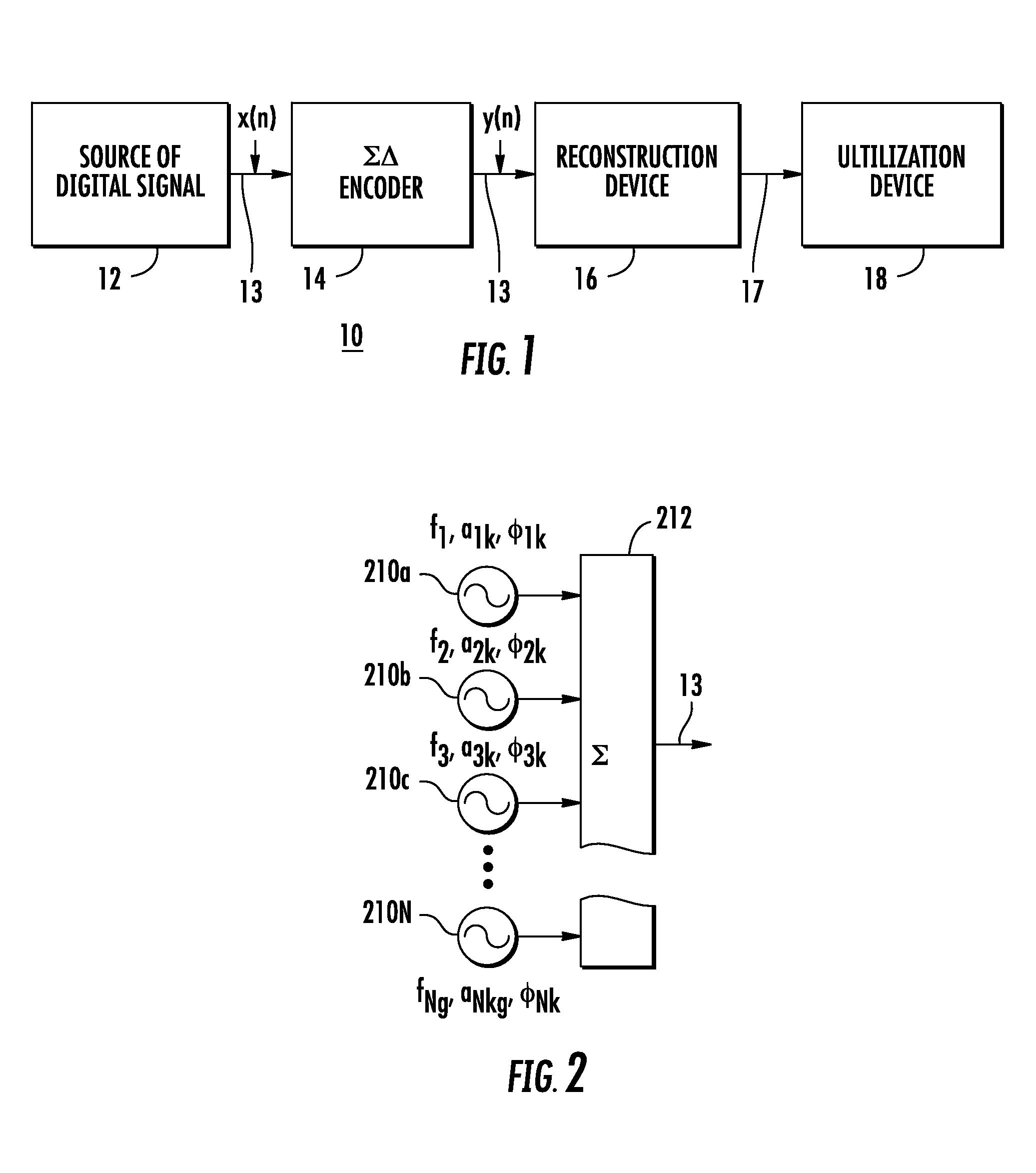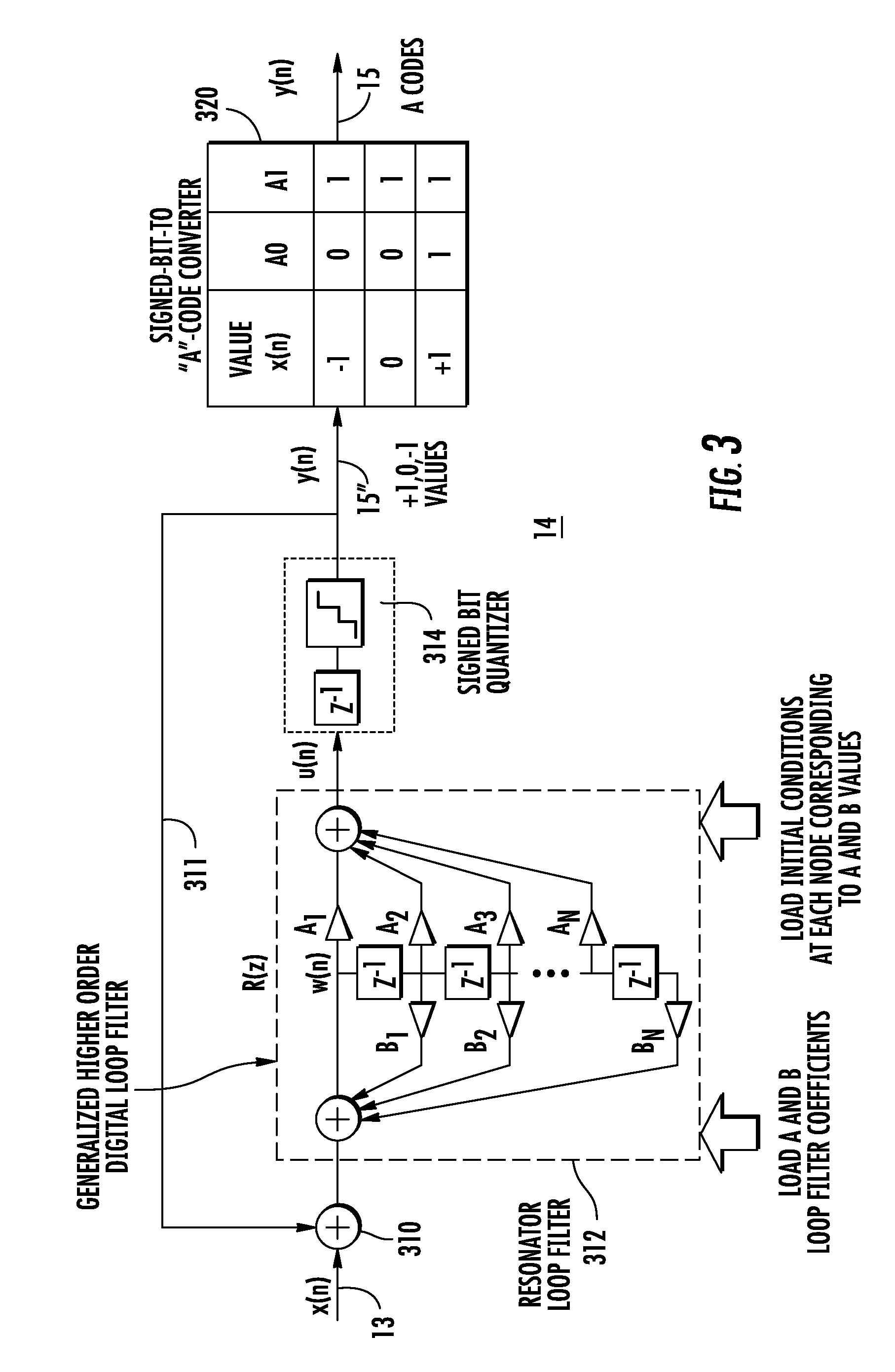Direct radio frequency generation using power digital-to-analog conversion
a technology of direct radio frequency generation and digital-to-analog conversion, which is applied in the direction of digital-to-analog convertors, multiple carrier systems, instruments, etc., can solve the problems of high nonlinearity of power amplifiers, distortion, and upconverters suffering from similar nonlinearity effects
- Summary
- Abstract
- Description
- Claims
- Application Information
AI Technical Summary
Benefits of technology
Problems solved by technology
Method used
Image
Examples
Embodiment Construction
[0030]FIG. 1 is a simplified block diagram illustrating a system 10 according to an aspect of the invention. In FIG. 1, a source 12 produces digital signal time sample of the desired transmit signals from waveform controlling parameters at a given sampling or data rate and with values represented with high bit resolution. Thus, multiple simultaneous or arbitrary signals representing instantaneous amplitude of the desired radio-frequency signals are produced and are represented with sufficient precision to enable the digital signal word round-off error effects to be negligible. When a high enough sampling rate is used the RF frequency is represented directly, including its carrier frequency within the first order Nyquist band, which is between 0 Hz and ½ the sampling frequency. Also a lower actual frequency may be represented when the transmit carrier frequency exceeds ½ of the sampling frequency, in conjunction with higher order Nyquist modes of operation. The digital signals from s...
PUM
 Login to View More
Login to View More Abstract
Description
Claims
Application Information
 Login to View More
Login to View More - R&D
- Intellectual Property
- Life Sciences
- Materials
- Tech Scout
- Unparalleled Data Quality
- Higher Quality Content
- 60% Fewer Hallucinations
Browse by: Latest US Patents, China's latest patents, Technical Efficacy Thesaurus, Application Domain, Technology Topic, Popular Technical Reports.
© 2025 PatSnap. All rights reserved.Legal|Privacy policy|Modern Slavery Act Transparency Statement|Sitemap|About US| Contact US: help@patsnap.com



